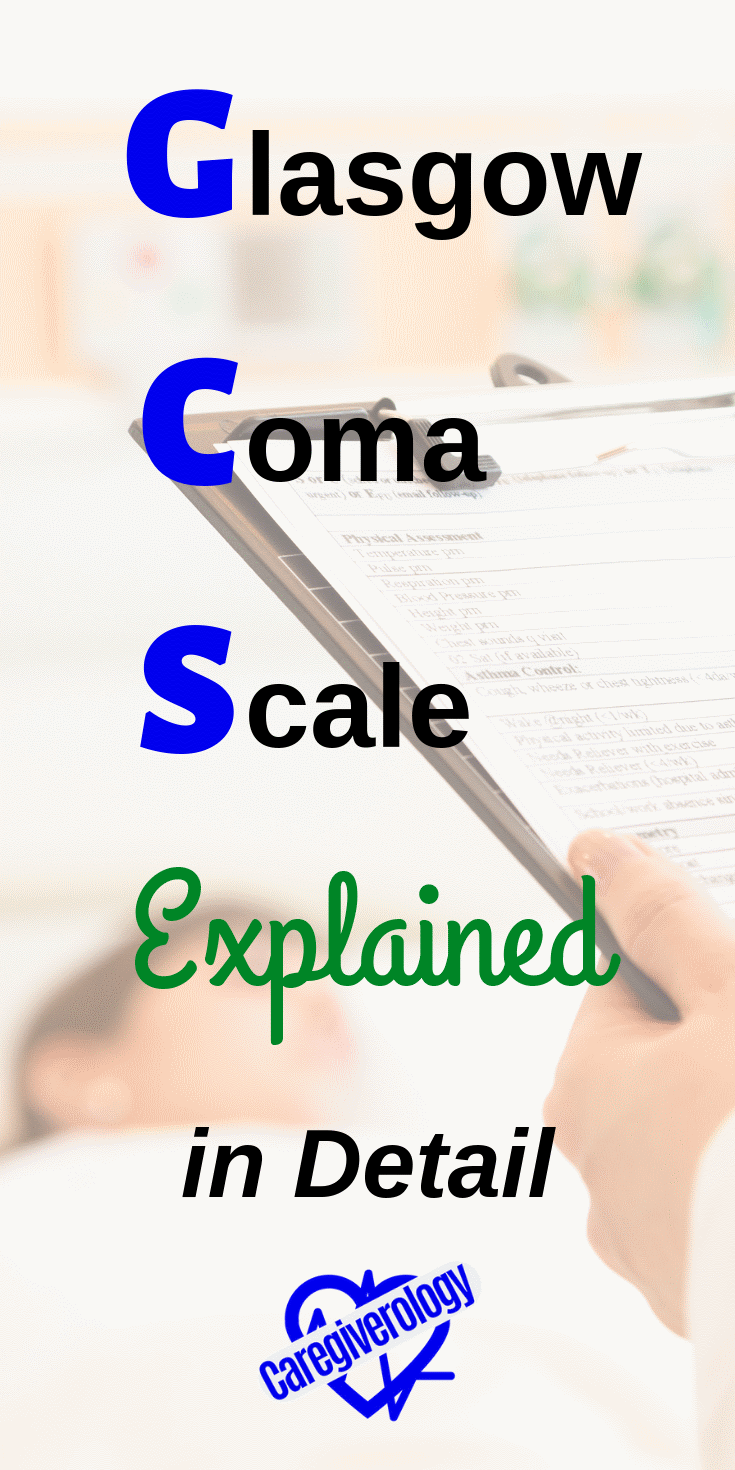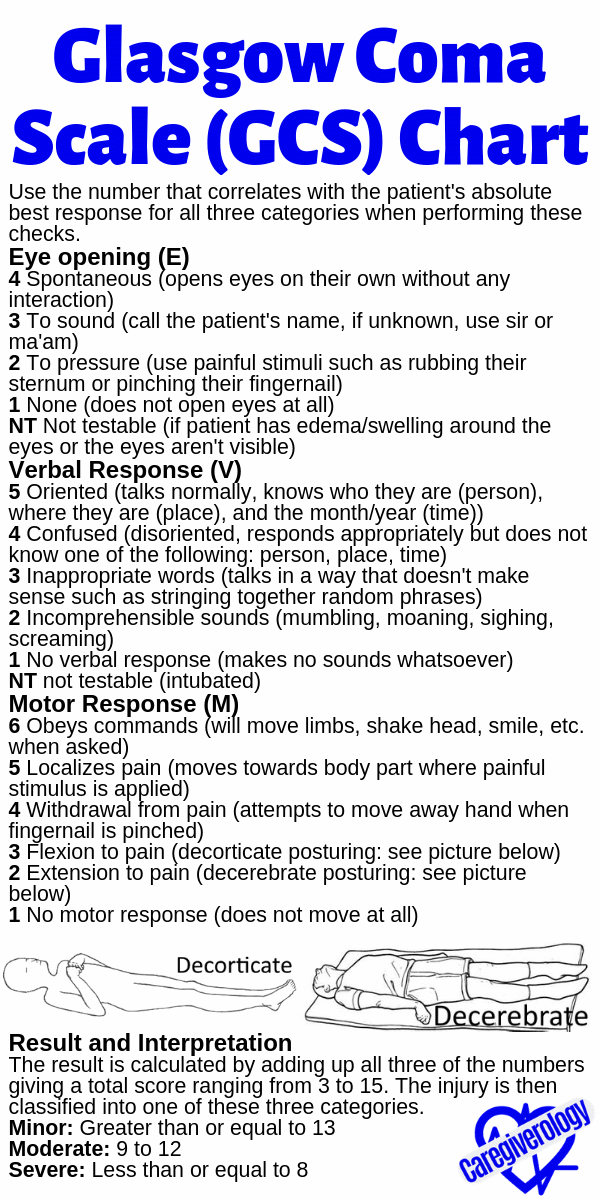Glasgow Coma Scale (GCS) Explained in Detail
The glasgow coma scale (abbreviated as GCS) is a tool created by Dr. Graham Teasdale used to measure a patient's level of consciousness (LOC) to determine the severity of a traumatic brain injury (TBI). A simplified version of this would be the AVPU scale. It uses a series of three different tests: eye opening (E), verbal response (V), and motor response (M).
Use the number that correlates with the patient's absolute best response for all three categories when performing these checks.
Eye opening Verbal response Motor response Result Not testable Pin Download and print this chart (pdf) Poster
Eye Opening (E)
4 Spontaneous (opens eyes on their own without any interaction)
3 To sound (call the patient's name, if unknown, use sir or ma'am)
2 To pressure (use painful stimuli such as rubbing their sternum or pinching their fingernail)
1 None (does not open eyes at all)
NT Not testable (if patient has edema/swelling around the eyes or the eyes aren't visible)
Verbal Response (V)
5 Oriented (talks normally, knows who they are (person), where they are (place), and the month/year (time))
4 Confused (disoriented, responds appropriately but does not know one of the following: person, place, time)
3 Inappropriate words (talks in a way that doesn't make sense such as stringing together random phrases)
2 Incomprehensible sounds (mumbling, moaning, sighing, screaming)
1 No verbal response (makes no sounds whatsoever)
NT not testable (intubated)
Motor Response (M)
6 Obeys commands (will move limbs, shake head, smile, etc. when asked)
5 Localizes pain (moves towards body part where painful stimulus is applied)
4 Withdrawal from pain (attempts to move away hand when fingernail is pinched)
3 Flexion to pain (decorticate posturing: see picture below)
2 Extension to pain (decerebrate posturing: see picture below)
1 No motor response (does not move at all)
 Decorticate position
Decorticate position Decerebrate
DecerebrateResult and Interpretation
The result is calculated by adding up all three of the numbers giving a total score ranging from 3 to 15. The injury is then classified into one of these three categories. Use the calculator below as needed.
Minor: Greater than or equal to 13
Moderate: 9 to 12
Severe: Less than or equal to 8
0 789+MS 456–M+ 123×M- 0.EXP÷MR ±√xC=MC |
| powered by calculator.net |
Not Testable (NT) and Modifiers
If the glasgow coma scale (GCS) score is not just a simple number, but also has letters, it could be a modifier. If the eye opening (E) score is not testable (NT), it may read as E1c or simply Ec. The c stands for closed. Similarly, the verbal response (V) may read as V1t or Vt. The t stands for tube (endotracheal tube which is used for intubation). These are still counted as a score of one.
So for example, a final score may read as GCS 4tc. This would be interpreted as the eyes are closed (c) due to swelling and the patient is intubated (t). Both of these together equal 2 so the remaining amount (4-2=2) is left for the motor response (M). Therefore it can be assumed that the patient has a decerebrate response to pain.
Pin this info!
Medical References for Caregivers
From Glasgow Coma Scale (GCS) Explained in Detail to Home
Recent Articles
-
Lifestyle Medicine Explained: Guiding You Back to Better Health
Apr 20, 25 09:51 AM
Did you know that 80% of chronic diseases—like heart disease, diabetes, and obesity—are preventable through lifestyle changes? Yet, many people rely solely on medication rather than addressing the roo… -
What to Expect During Post-Operative Recovery at Home - Caregiverology
Apr 08, 25 08:21 PM
Surgery may be over, but the journey to full recovery is just beginning, and for many people, the hardest part happens after they leave the hospital. -
How to Plan for Aging: Financial, Health, and Lifestyle Considerations
Mar 29, 25 12:40 PM
Did you know that 70% of people over 65 will need some form of long-term care? Yet, many delay planning until it’s too late. Aging is inevitable, but how we experience it depends on preparation.






New! Comments
Have something to say about what you just read? Leave a comment in the box below.